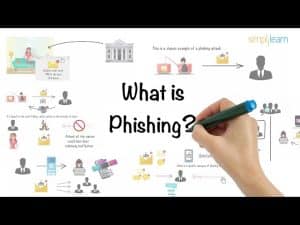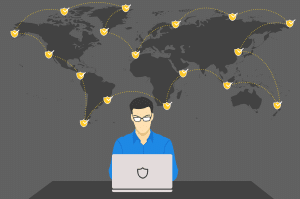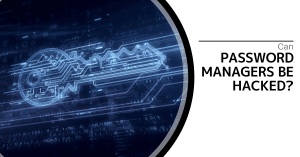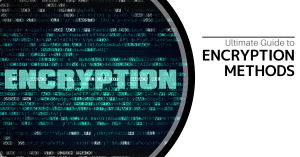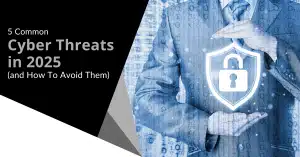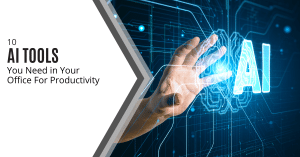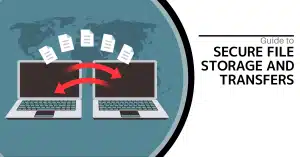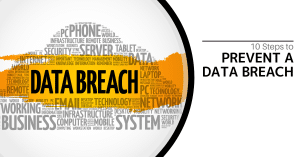In today’s hyperconnected world, cybersecurity isn’t just an IT concern—it’s a fundamental aspect of personal and business safety. As we navigate through 2025, cyber threats have evolved dramatically, becoming more sophisticated, targeted, and potentially devastating than ever before. Understanding these threats isn’t just prudent; it’s essential for anyone who uses digital technology.
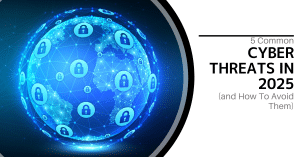
Table of Contents
- The Evolving Landscape of Cyber Threats in 2025
- AI-Powered Phishing and Social Engineering Attacks
- Ransomware as a Service (RaaS) and Double Extortion Tactics
- IoT Vulnerabilities and Smart Infrastructure Attacks
- Supply Chain Compromises and Third-Party Vulnerabilities
- Advanced Persistent Threats (APTs) and State-Sponsored Attacks
- Comprehensive Cybersecurity Strategies for 2025
- Conclusion: Staying Ahead of Cyber Threats in 2025
- FAQ: Common Questions About Cyber Threats in 2025
This comprehensive guide examines the five most prevalent cyber threats in 2025 and provides actionable strategies to protect yourself, your data, and your organization. From AI-powered phishing to supply chain vulnerabilities, we’ll explore how cybercriminals have adapted their tactics and how you can stay one step ahead.
The Evolving Landscape of Cyber Threats in 2025
The cybersecurity battlefield has undergone significant transformation in recent years. Traditional security perimeters have dissolved with the rise of remote work, cloud computing, and interconnected devices. Meanwhile, threat actors have gained access to increasingly powerful tools that make their attacks more difficult to detect and mitigate.
According to the Global Cybersecurity Alliance’s 2025 Threat Report, cyber attacks increased by 37% globally in the past year alone, with an estimated cost to businesses exceeding $8.5 trillion worldwide. This staggering figure represents not just financial losses but also compromised personal data, damaged reputations, and disrupted operations.
| Cyber Attack Statistics 2025 | Value |
| Annual increase in cyber attacks | 37% |
| Global cost of cybercrime | $8.5 trillion |
| Average cost of a data breach | $4.9 million |
| Average time to detect a breach | 212 days |
| Percentage of attacks targeting small businesses | 43% |
Source: Global Cybersecurity Alliance 2025 Threat Report
As we explore the most common cyber threats in 2025, remember that awareness is your first line of defense. Let’s dive into these threats and learn how to protect ourselves against them.
AI-Powered Phishing and Social Engineering Attacks
The Evolving Face of Phishing in 2025
Phishing attacks have evolved dramatically since their early days of obvious grammar mistakes and suspicious links. In 2025, artificial intelligence has transformed phishing into one of the most sophisticated cyber threats facing individuals and organizations.
Today’s AI-powered phishing attacks utilize:
- Deep fake voice technology that can mimic executives or trusted contacts with remarkable accuracy
- Natural language processing to create contextually relevant messages that reference real events or relationships
- Behavioral analysis to time attacks when targets are most vulnerable (e.g., during high-stress periods)
- Personalized targeting based on social media profiles and public data
These attacks have become alarmingly effective. According to the Cybersecurity Protection Bureau, sophisticated phishing attempts saw a success rate increase of 28% in the past year, with 65% of major data breaches beginning with a phishing attack.
Real-World Example: The Global Financial Services Attack
In early 2025, a coordinated phishing campaign targeted employees at 15 major financial institutions. The attackers used AI to craft personalized emails that referenced recent company announcements and included accurate details about ongoing projects.
These emails contained malicious attachments disguised as quarterly reports, which, when opened, deployed fileless malware that harvested credentials and provided backdoor access.
The attack resulted in temporary access to customer financial data at three institutions before being detected, demonstrating the sophisticated nature of modern phishing.
How to Protect Yourself from AI-Powered Phishing
- Implement multi-factor authentication (MFA) across all accounts and services
- Establish verification protocols for financial requests or sensitive information transfers
- Use advanced email filtering solutions with AI detection capabilities
- Conduct regular phishing awareness training with realistic simulations
- Verify requests through secondary channels when they involve sensitive information or financial transactions
- Keep software and security tools updated to protect against known vulnerabilities
Remember: Even the most convincing phishing attempts typically create some sense of urgency or emotional response. When you feel pressured to act quickly on an unexpected message, take a moment to verify through another channel.
Ransomware as a Service (RaaS) and Double Extortion Tactics
The Industrialization of Ransomware in 2025
Ransomware has evolved from isolated attacks into a sophisticated criminal business model. In 2025, Ransomware as a Service (RaaS) has become the predominant method for deploying these attacks, making advanced ransomware accessible to criminals regardless of their technical expertise.
The modern RaaS ecosystem includes:
- Specialized developer teams that create and update the ransomware code
- Affiliate programs where distributors earn commissions for successful attacks
- Technical support services for both attackers and victims
- Specialized negotiators who maximize ransom payments
- Money laundering operations that convert cryptocurrency payments into untraceable funds
Most concerning is the widespread adoption of “double extortion” tactics, where attackers not only encrypt data but also exfiltrate it, threatening to publish sensitive information if ransoms aren’t paid. This neutralizes the backup strategy that organizations previously relied on.
The Impact of Ransomware in 2025
The statistics paint a troubling picture:
- Average ransom demand: $1.2 million (up 43% from 2024)
- Average downtime following attack: 23 days
- Percentage of victims who pay ransom: 58%
- Percentage who fully recover data after payment: 61%
- Industries most targeted: healthcare, education, and manufacturing
Protecting Against Ransomware Threats
To defend against these evolved ransomware threats in 2025, implement these critical measures:
- Maintain comprehensive backup solutions with offline copies and regular testing
- Implement network segmentation to contain potential infections
- Deploy advanced endpoint protection with behavioral analysis capabilities
- Restrict administrative privileges to essential personnel only
- Establish and regularly test an incident response plan specific to ransomware
- Consider zero-trust architecture to limit lateral movement within networks
- Conduct regular security awareness training focused on initial access vectors
Many organizations in 2025 are also investing in cyber insurance specifically covering ransomware incidents, though insurers now require stringent security measures before providing coverage.
IoT Vulnerabilities and Smart Infrastructure Attacks
The Expanding Attack Surface of Connected Devices
In 2025, the Internet of Things (IoT) has expanded dramatically, with an estimated 41.6 billion connected devices worldwide. While these smart devices enhance convenience and efficiency, they also present a vast attack surface for cybercriminals.
The most concerning IoT security issues in 2025 include:
- Inadequate security updates for consumer devices
- Weak authentication mechanisms and default credentials
- Insecure communication protocols between devices
- Limited processing power for implementing robust security
- Exploitation of devices for botnet recruitment
As our homes, cities, and industries become increasingly connected, the potential impact of IoT vulnerabilities has escalated from privacy concerns to physical safety risks.
Case Study: The Connected Healthcare Breach
In mid-2025, a hospital network experienced an attack targeting their connected medical devices. Attackers gained entry through inadequately secured patient monitoring systems and moved laterally through the network, eventually compromising diagnostic equipment and patient records.
While no direct harm to patients occurred, the incident forced the hospital to temporarily revert to manual processes, delaying treatments and demonstrating the real-world consequences of IoT vulnerabilities.
Protecting Your Connected Ecosystem
To safeguard against IoT-related cyber threats in 2025:
- Inventory all connected devices in your environment
- Segment IoT devices onto separate networks from critical systems
- Change default credentials immediately upon installation
- Regularly check for and apply firmware updates
- Implement network monitoring to detect unusual device behavior
- Disable unnecessary features and services on smart devices
- Consider IoT-specific security solutions that can monitor device behavior
For organizations, developing a formal IoT security policy has become essential, addressing everything from procurement standards to decommissioning procedures.
Supply Chain Compromises and Third-Party Vulnerabilities
The Weakest Link in Your Security Chain
One of the most significant cybersecurity shifts in 2025 has been the increase in attacks targeting the supply chain. Rather than directly attacking well-protected organizations, cybercriminals have found success by compromising vendors, suppliers, and software providers.
Modern supply chain attacks involve:
- Software supply chain intrusions where attackers inject malicious code during development
- Vendor account compromises providing backdoor access to customers
- Hardware tampering during manufacturing or distribution
- Cloud service provider vulnerabilities affecting thousands of customers simultaneously
The insidious nature of these attacks makes them particularly dangerous, as malicious code or access often comes from trusted sources, bypassing many security controls.
High-Profile Supply Chain Attacks of 2025
The most significant supply chain compromise of 2025 affected a major cloud infrastructure provider, where attackers inserted malicious code into a routine security update.
This affected approximately 18,000 customers before being discovered, demonstrating how a single compromise can have cascading effects across industries.
Mitigating Supply Chain Risks
Protecting against supply chain vulnerabilities requires a multi-layered approach:
- Implement vendor risk assessment processes for all third-party relationships
- Establish code signing and verification procedures for software updates
- Conduct regular security audits of critical suppliers
- Utilize application allowlisting to prevent unauthorized software execution
- Enforce least privilege principles for third-party access to systems
- Develop contingency plans for critical supplier compromises
- Consider zero-trust principles when integrating third-party solutions
Organizations should also consider contractual security requirements for vendors, including rights to audit and specific security standards that must be maintained.
Advanced Persistent Threats (APTs) and State-Sponsored Attacks
The Rise of Sophisticated, Targeted Campaigns
Advanced Persistent Threats represent the highest tier of cyber risk in 2025, particularly for organizations in critical infrastructure, government, defense, and high-value industries. These attacks are characterized by:
- Long-term, stealthy presence within compromised networks
- Sophisticated evasion techniques to avoid detection
- Patient data exfiltration over extended periods
- Targeting of specific high-value information rather than opportunistic attacks
- Substantial resources and technical capabilities behind the attackers
While traditionally associated with nation-state actors, the lines have blurred in 2025, with some criminal organizations demonstrating capabilities previously only seen in state-sponsored groups.
APT Targeting Trends in 2025
| Sector | Primary Targeting Motivation | Common Attack Vectors |
| Government | Intelligence gathering, sabotage | Spear phishing, watering hole attacks |
| Critical Infrastructure | Disruption capabilities, sabotage | Supply chain, insider threats |
| Finance | Financial theft, economic espionage | Zero-day exploits, island hopping |
| Healthcare | Intellectual property, patient data | Third-party vulnerabilities, credential theft |
| Manufacturing | Intellectual property, process details | Industrial control system attacks, insider threats |
Defending Against Advanced Persistent Threats
While completely preventing APTs is challenging, organizations can implement measures to detect them earlier and limit their impact:
- Deploy advanced threat detection systems with behavioral analysis
- Implement comprehensive logging and monitoring
- Conduct regular threat hunting exercises
- Develop an intelligence-led security approach
- Segment networks to contain potential breaches
- Practice the principle of least privilege
- Conduct regular penetration testing specifically targeting APT techniques
- Prepare incident response plans for sophisticated attack scenarios
For most organizations, partnering with specialized threat intelligence providers has become essential to stay informed about emerging APT tactics.
Comprehensive Cybersecurity Strategies for 2025
As we’ve explored the five most common cyber threats in 2025, several overarching security principles emerge that can help protect against multiple threat vectors simultaneously.
The Foundation: Security Awareness and Training
Human error remains a significant factor in successful cyber attacks. Regular, engaging security awareness training covering:
- Recognizing social engineering attempts
- Secure remote work practices
- Password management and MFA
- Data handling procedures
- Incident reporting protocols
This training should be tailored to different roles and include realistic simulations of current threats.
Technical Controls for Modern Threats
A robust technical security posture in 2025 should include:
- Zero Trust Architecture – Verify every access attempt regardless of source
- AI-Enhanced Security Monitoring – Detect anomalous behavior across systems
- Identity and Access Management – Implement strong authentication and authorization
- Endpoint Detection and Response (EDR) – Provide visibility into endpoint activities
- Cloud Security Posture Management – Secure increasingly complex cloud environments
- Data Loss Prevention – Control sensitive data movement
- Regular Vulnerability Management – Identify and remediate weaknesses
- Encrypted Communications – Protect data in transit
Creating Organizational Resilience
Beyond prevention, organizations must prepare for successful attacks:
- Develop and test incident response plans
- Establish a security operations center (internal or external)
- Implement comprehensive backup strategies
- Practice disaster recovery scenarios
- Consider cyber insurance with appropriate coverage
- Establish relationships with incident response providers
- Create communication plans for security incidents
Conclusion: Staying Ahead of Cyber Threats in 2025
The cyber threat landscape of 2025 is characterized by increased sophistication, automation, and potentially devastating impact. From AI-powered phishing to supply chain compromises, attackers have evolved their tactics to bypass traditional security measures.
However, by understanding these common cyber threats and implementing layered defense strategies, individuals and organizations can significantly reduce their risk. The most successful approaches combine technical controls with human awareness, creating a security culture that adapts as quickly as the threats themselves.
As we move further into 2025, cybersecurity will continue to be a critical priority requiring ongoing attention, investment, and adaptation. By staying informed about emerging threats and regularly reassessing your security posture, you can protect what matters most in an increasingly digital world.
Remember that cybersecurity is not a destination but a journey—one that requires vigilance, commitment, and the willingness to evolve as new threats emerge.
FAQ: Common Questions About Cyber Threats in 2025
Q: What is the most dangerous cyber threat in 2025?
A: While impacts vary by organization, AI-powered targeted attacks combining multiple techniques present the greatest risk due to their sophistication and ability to evade traditional defenses.
Q: How much should my organization budget for cybersecurity?
A: Industry benchmarks suggest 10-15% of the IT budget for most organizations, with critical infrastructure and high-risk industries allocating up to 20%.
Q: Is cyber insurance worth the investment?
A: For most organizations, yes. However, carefully review coverage terms as insurers have become more restrictive about requirements and exclusions.
Q: How often should security awareness training be conducted?
A: At minimum quarterly, with monthly microlearning sessions and real-time simulations providing the best outcomes.
Q: What’s the single most effective security measure for small businesses?
A: Implementing multi-factor authentication across all systems provides the best security return on investment for most small businesses.
